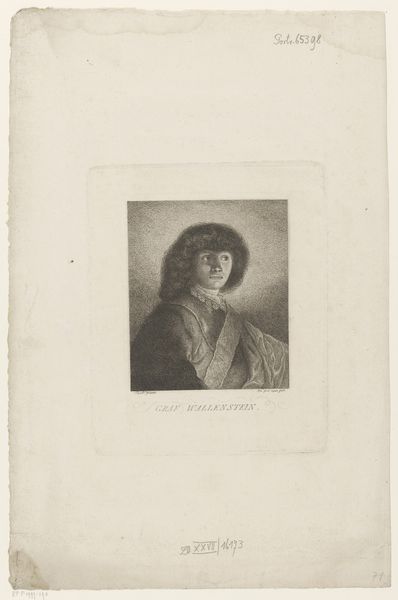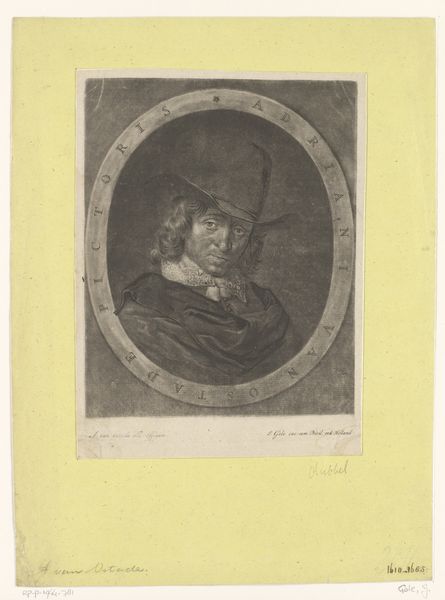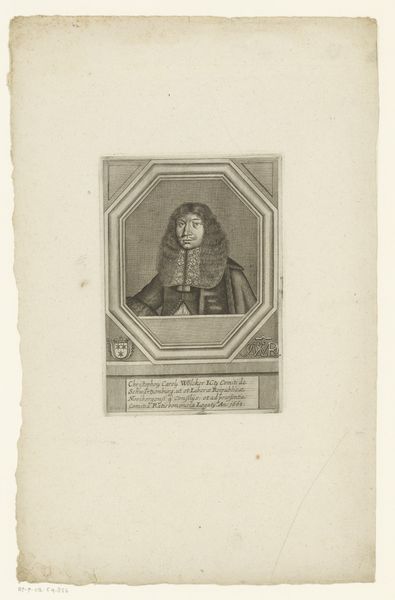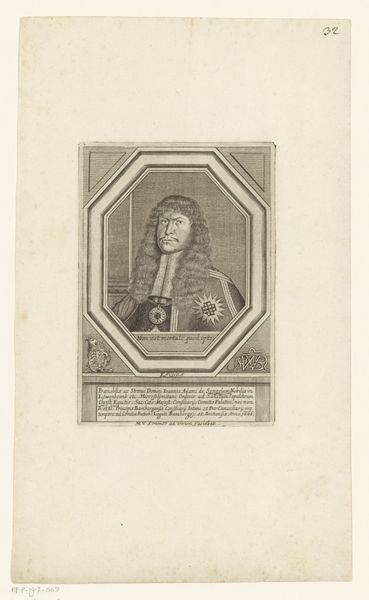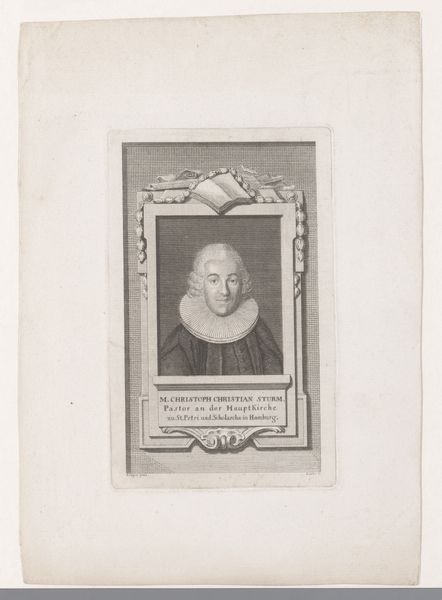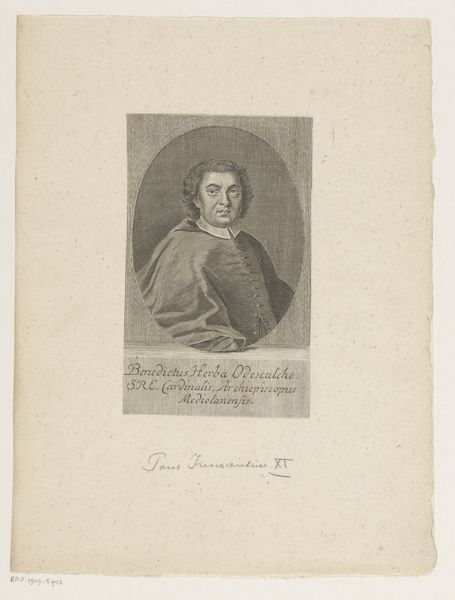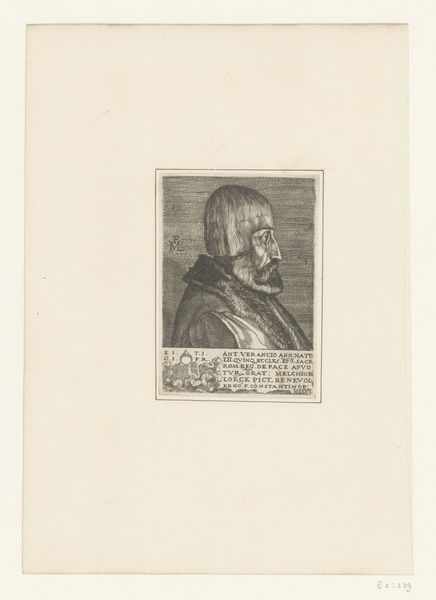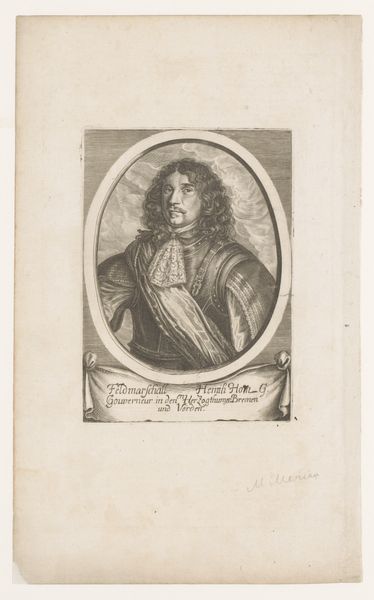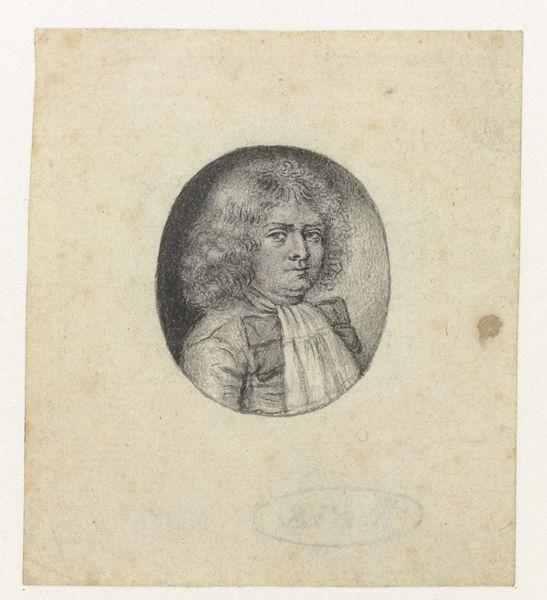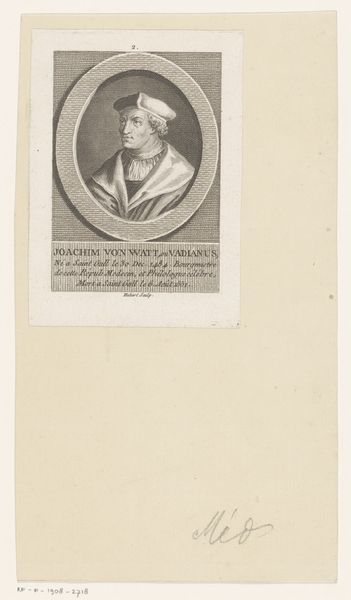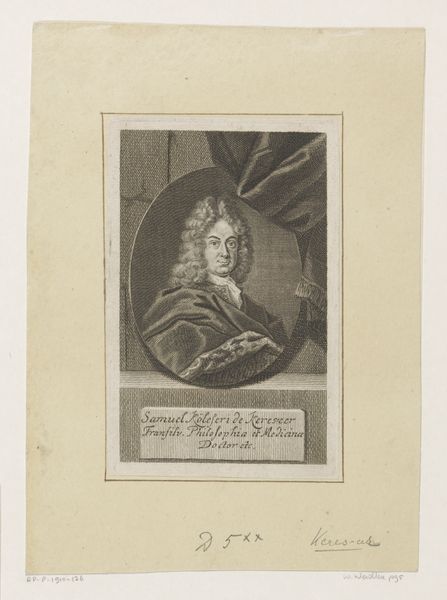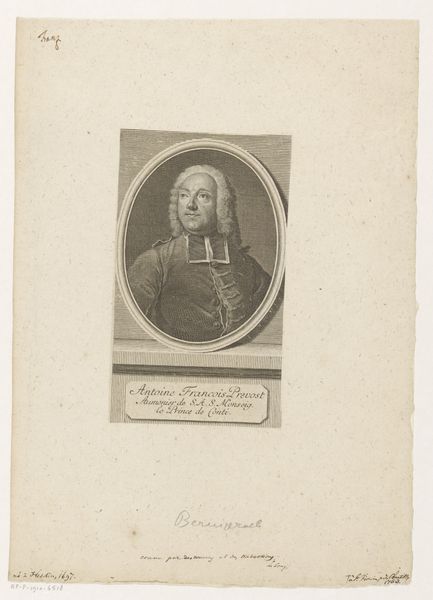
print, engraving
#
portrait
# print
#
history-painting
#
academic-art
#
engraving
Dimensions: height 126 mm, width 83 mm
Copyright: Rijks Museum: Open Domain
This is Georg Fennitzer's "Portret van Peter (I) Volckamer," made around 1697-1700 using etching. Notice how the portrait is framed within a dark rectangle, sharply contrasting with the surrounding paper. This contrast immediately draws our attention to the subject's face and upper body. Fennitzer’s use of etching captures a sense of realism, particularly in the detailed rendering of Volckamer’s features and clothing. The lines, though fine, are definite, creating clear boundaries and textures. The texture of the hair, the folds of the fabric, and the subtle shadows on the face all contribute to the overall sense of depth. Semiotically, the darkness enveloping the portrait acts as a visual code, invoking a sense of formality. The rectangular enclosure is not merely a compositional device. It functions as a border, highlighting the tension between the individual and the world. The portrait remains a powerful reminder of how art can function as a system of signs, encapsulating both personal identity and cultural values within its formal structure.
Comments
No comments
Be the first to comment and join the conversation on the ultimate creative platform.
